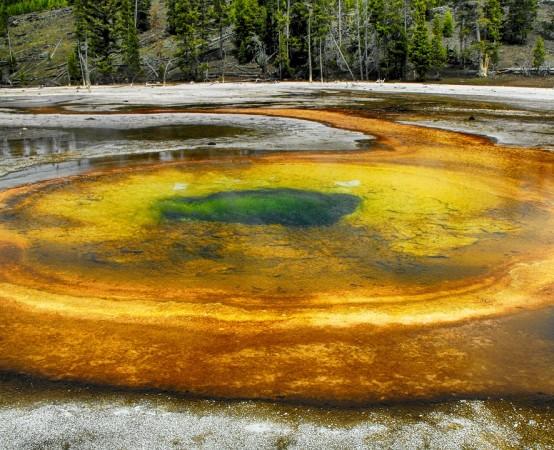
A current research on the Yellowstone supervolcano — a volcano so big it might cause extinction-level destruction, does not predict an explosion any time soon, even as several researchers have pointed out that is it due for an eruption.
While it is true that there is no real way to accurately predict when a volcano is going to erupt, a new ongoing research is being done to better understand Yellowstone's inner workings, reports the the Washington Post. The report mentions that the Yellowstone is one of the largest active volcanoes in the world right now- it is a little over 70 km wide. It was first discovered in the 1960s, says the report, but its scale and significance was not known till around the 1980s.
A major eruption could have societal and planetary effects, notes the report, but that happening is not likely; scientists are calling such an event "low-probability". In fact, supervolcano explosions are a rare event, having said that, a lot of its action is deep underground, out of sight, and involves complex chemistry and strong geological forces.
The most recent published study on the inner workings of Yellowstone has offered better insight into the workings of this behemoth. Researchers modeled the way magma rises from deep within the Earth's interior and has then created two large chambers of partially melted rock just below the national park. These two chambers, the researchers found, are stacked one on top of each other. They are separated by a layer of non-melted, solid rock called the sill (much like a window sill).
Molten magma that rises from deep inside the Earth's crust does not contain much gas, and flows freely, so it comes up quite fast, and hits the relatively colder crust and solidifies, forming the sill. The top of the sill is about 10 km below the surface, notes the Post.
Seated atop the sill is the second chamber. Here, the molten rock is a lot more thick and gooey because of all the gas it holds. This is also what makes it dangerous because it can cause massive explosions. The report likens this chamber to a can of fizzy soda that has been shaken up, ready to explode. "Someday we might have a model snapshot saying this is what the system looks like when there's enough melt for there to be a large eruption," lead author Dylan Colón, from the University of Oregon.
With the most recent explosion happening about 70,000 years ago, scientists do not believe that the two chambers will combine and trigger an eruption anytime soon. However, smaller, less dangerous eruptions are a possibility, say researchers.
The study was first published in the American Geophysical Union (AGU) journal Geophysical Research Letters.














